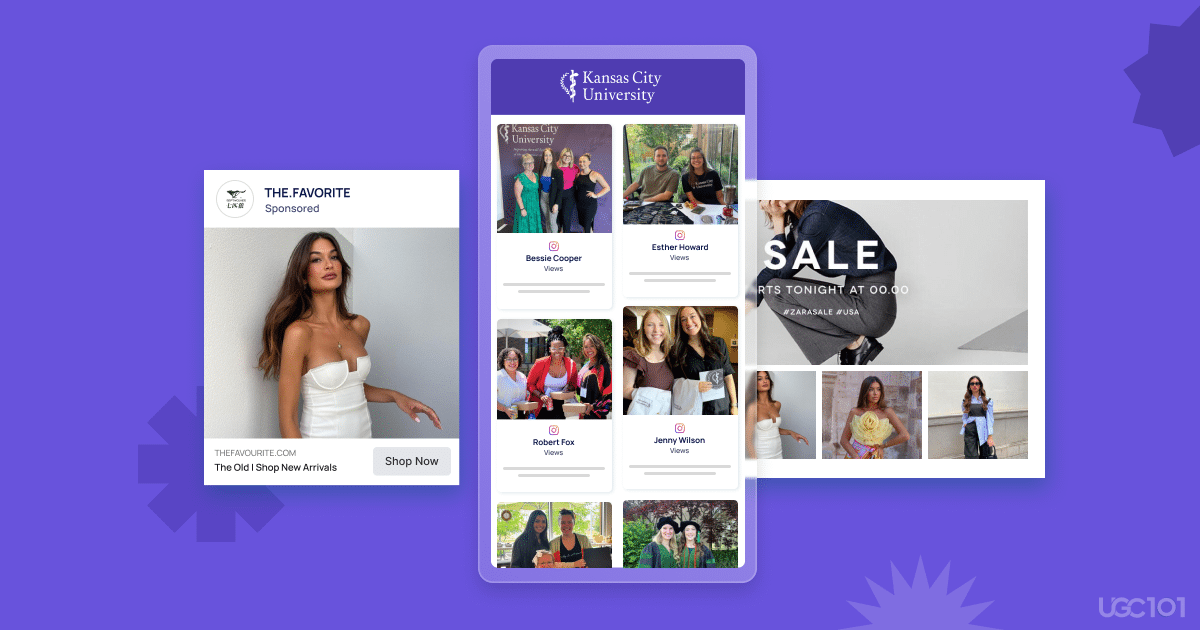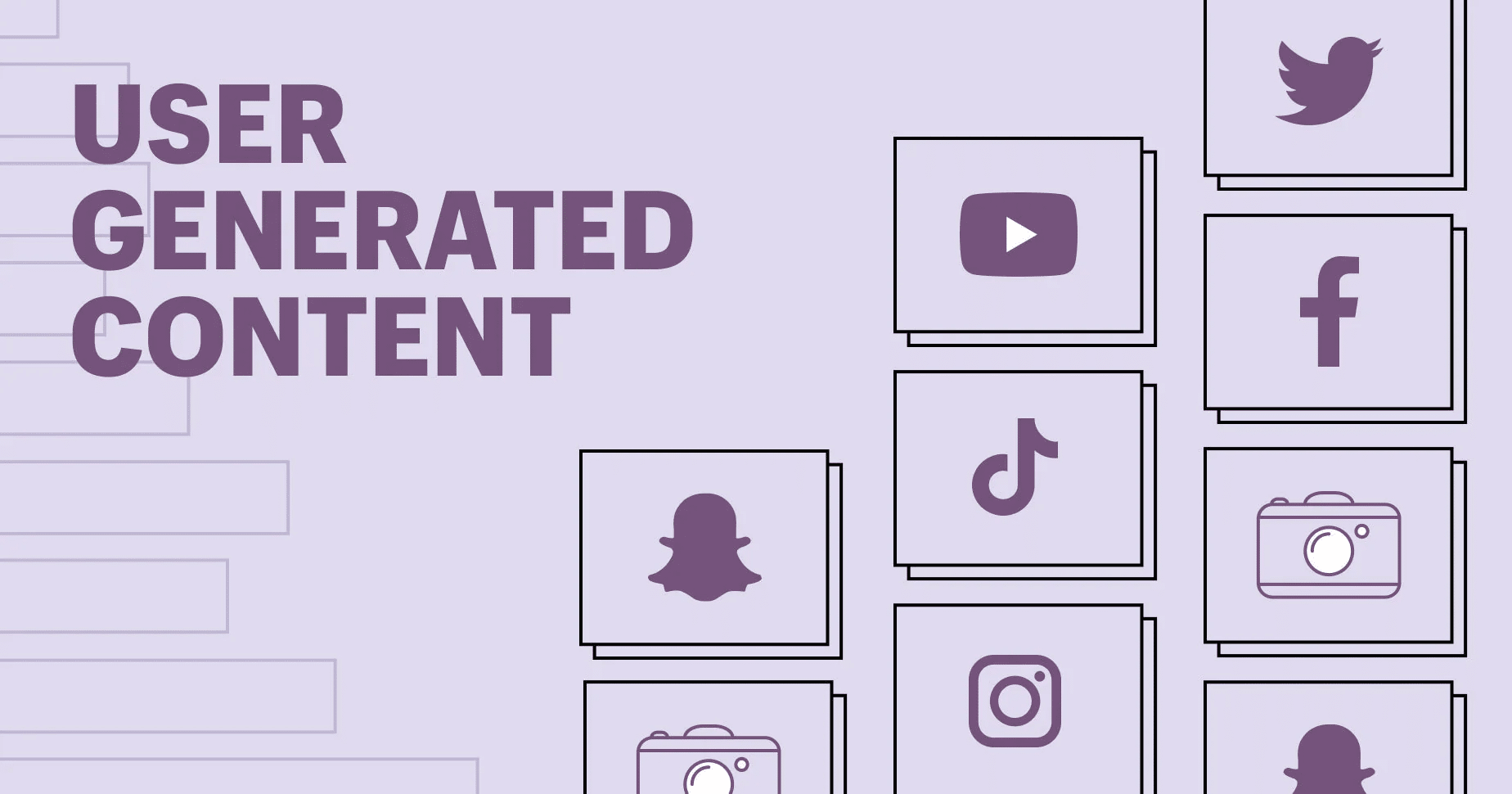Ever wondered why some brand stories feel like a friendly chat rather than a sales pitch? It’s the magic of User-generated Content (UGC). This guide unpacks the transformative power of UGC in brand marketing, revealing why it’s the game-changer for authenticity, community building, and exceptional user experiences.
Let’s explore how UGC transforms brands into relatable companions on our digital journeys.
Why You Should Repurpose UGC?
Let’s uncover how harnessing the power of UGC transforms brand narratives, forging deeper connections with audiences and amplifying brand impact.
1. Authenticity:
UGC is authentic by nature, coming directly from users’ experiences. When integrated into your brand marketing, it adds an authentic touch, showcasing genuine interactions with your product or service. This authenticity fosters trust and credibility among your audience as they see real people engaging positively with your brand.
2. Cost-effectiveness:
Repurposing UGC can significantly reduce marketing expenses. Rather than investing extensively in creating original content, leveraging existing user-generated content can be more budget-friendly. It allows brands to capitalize on content that already resonates with their audience, saving both time and resources while often yielding higher engagement.
3. Showcasing uniqueness:
UGC offers diverse perspectives and experiences related to your brand. By showcasing this variety, you highlight the uniqueness and versatility of your product or service. This variety captivates potential customers by demonstrating how your brand caters to different tastes, preferences, and lifestyles, making it more appealing and relatable.
4. Building a community:
UGC encourages community engagement and participation. When users see their content shared or acknowledged by a brand, it fosters a sense of belonging and connection. This sense of community around your brand encourages user loyalty and advocacy as individuals feel more invested in a collective experience.
5. Delivering an exceptional user experience:
Integrating UGC enriches the user experience. It provides social proof and relatable stories, making your brand more engaging and personable. When potential customers encounter UGC that resonates with them, it creates an emotional connection, enhancing their overall experience with your brand.
Leveraging these aspects of UGC in your brand marketing not only amplifies your message but also nurtures deeper connections with your audience, resulting in increased authenticity, engagement, and loyalty.
4 Ways to Repurpose UGC for Brand Marketing
Repurposing UGC is a dynamic strategy that amplifies brand messaging through authentic, user-created material. The process begins by actively seeking relevant content across diverse platforms, aligning it with your target audience and brand objectives, and securing permissions for its use.
1. Search for the relevant UGC:
Identify platforms, social media channels, forums, and communities where your audience actively engages. Utilize hashtags, keywords, and monitoring tools to discover relevant UGC that aligns with your brand’s values, message, and objectives. Curate content that embodies authenticity and resonates with your target audience.
2. Define Your Target Audience and Goals:
Understand your audience demographics, preferences, and behaviors. Determine specific marketing goals aligned with your brand’s objectives. Tailor the selection and repurposing of UGC to address the needs and interests of your target audience, ensuring it aligns with your overarching marketing strategies.
3. Acquire UGC Rights from Users:
Request rights from original creators to repurpose their UGC. Ensure clear communication and transparency about how their content will be used. This step is crucial for ethical and legal considerations. Develop straightforward processes, such as user agreements or permissions, to obtain the necessary rights before incorporating UGC into your campaigns.
This three-step approach forms the cornerstone of an effective UGC repurposing strategy, ensuring authenticity, resonance, and ethical utilization of content.
Repurpose UGC to Level Up Brand Experience
Leveraging User-generated Content (UGC) goes beyond mere content curation; it’s a catalyst to transform brand experiences. By strategically repurposing UGC across digital touchpoints, brands can forge deeper connections, foster authenticity, and elevate the overall brand journey.
1. Enhance Your Website with UGC:
Integrate curated UGC into your website to create an immersive and relatable user experience. Incorporate customer reviews, testimonials, or user-generated videos on product pages to reinforce credibility and showcase real-life experiences with your brand.
2. Repurpose UGC in Email Campaigns:
Infuse email marketing campaigns with UGC to captivate your audience. Incorporate compelling user stories, visuals, or testimonials within newsletters or promotional emails. Personalize content based on UGC that aligns with recipients’ interests, fostering engagement and authenticity.
3. Enhance Event Experience with UGC:
Utilize UGC to enhance the experience at events or campaigns. Create interactive displays showcasing user content, host live social media feeds featuring attendee posts, or encourage real-time sharing during events to amplify engagement and community participation.
4. Use UGC To Revolutionize Your Print Media:
Incorporate UGC creatively into print media materials such as brochures, posters, or magazine ads. Leverage user testimonials, images, or reviews to add a human touch and authenticity to traditional marketing collateral, connecting with readers on a personal level.
How do you track the success of the repurposed UGC?
Measuring the impact of repurposed User-generated Content (UGC) is pivotal in understanding its influence on brand engagement and conversions.
1. Setting Goals and Metrics:
Define clear and measurable goals for your UGC campaigns. Whether it’s increasing brand awareness, driving website traffic, boosting conversions, or fostering community engagement, establish specific key performance indicators (KPIs) aligned with these goals. Metrics could include impressions, engagement rates, click-through rates, conversion rates, etc.
2. The Power of Engagement:
Monitor audience engagement metrics to gauge the impact of UGC. Analyze likes, shares, comments, and user interactions with repurposed content across various platforms. Engaged audiences tend to spend more time with your content, indicating its relevance and resonance.
3. Conversion is Key:
Track conversion metrics directly attributed to UGC. Measure how UGC contributes to conversions, whether it’s lead generation, sales, sign-ups, or other desired actions. Analyze conversion rates of users exposed to repurposed UGC compared to those who aren’t.
4. Fine-tuning your UGC Strategy:
Regularly assess the performance of repurposed UGC and iterate on your strategy. Identify which types of UGC perform best which channels yield higher engagement, and adapt your approach accordingly. A/B testing different UGC formats or placements can provide insights into optimizing effectiveness.
5. The Power of Analytics:
Leverage analytics tools to gather detailed data on UGC performance. Platforms like Google Analytics, social media insights, or specific UGC tools offer valuable data. Analyze metrics such as traffic sources, user behavior,333q1 conversion funnels, and demographic information to gain comprehensive insights.
By employing strategic metrics and analytics, brands can decode the effectiveness of their repurposed UGC initiatives and fine-tune strategies for amplified audience resonance and conversion.
Conclusion
User-generated Content (UGC) isn’t just content; it’s the heart of real connections. It elevates brand stories, making them relatable and genuine. Embracing UGC means letting your audience shape your brand narrative, creating an authentic bond that lasts beyond the screen.





